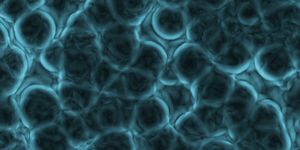How B Cells Find Their Way to Lymph Nodes
In order to generate immunity against invaders, some immune cells have to get to the lymph nodes. So how do they know how to get there? Researchers have now learned more about how crucial immune agents called B cells are able to navigate a dense network of tissues, vessels, and blood to reach the lymph nodes and help trigger an immune response. The findings, which have been reported in Nature Communications, have indicated that there is a trail of molecules that work to guide B cells through a treacherous path so that they can ultimately find their way to their destination.
"Our study suggests that B-cells sniff out a chemical trail which allows them to swim over relatively long distances in a highly complex microenvironment to reach their key destination," said the co-lead author of the study, Professor Mark Leake, from the Physics of Life group in the Department of Physics at the University of York.
The lymph nodes can act as a kind of filtration system, which traps microbial pathogens like viruses before they can reach other, sensitive areas of the body. B cells are critical to the immune system, and as they mature they have to move through the body from the bone marrow and eventually to the lymph nodes. Some B cells that reside in the lymph nodes acquire molecules from the surface of pathogens, and they present these so-called antigens to T cells. The T cells will then be activated if they have a receptor that recognizes the antigen. B cells can also produce antibodies.
This work has shown that extremely small cells are able to travel over relatively vast distances to go where they're needed.
"Relying on a single chemical transmitter to act as a beacon across the whole of the lymph node wouldn't do the trick, since the signal becomes too dilute and swamped by noise," said Leake. "Instead, these multiple signals are like having a trail of breadcrumbs that the cells can follow."
In this study, the researchers tagged molecules with fluorescent markers so they could track the movements of the cells, and used computational models and machine learning to map the fine structure of lymph nodes.
"The only way we could gain this incredible new insight is by forming a large research team with a broad range of expertise crossing between multiple traditional science disciplines," said Leake. "Research into understanding the workings of the immune system at the scale of single molecules may help us to understand why things go wrong in the case of some diseases of the immune system. It may help pave the way to new drugs that help to improve the immune system's ability to combat emerging threats from harmful viruses and bacteria that the human population have not previously encountered."
Sources: AAAS/Eurekalert! via University of York, Nature Communications









